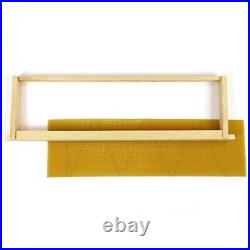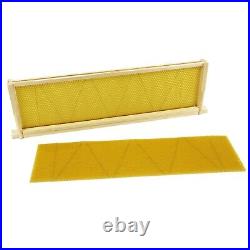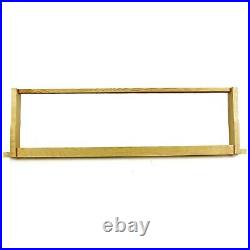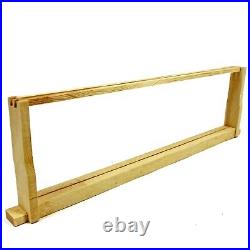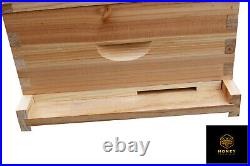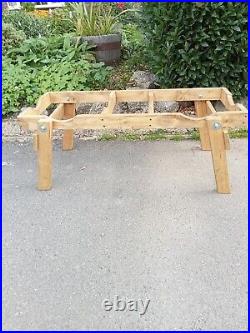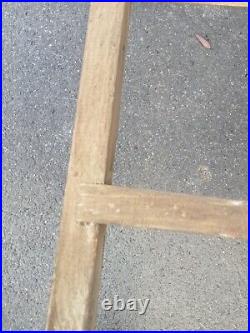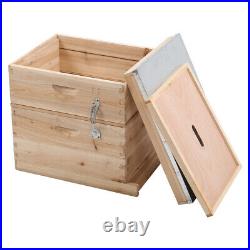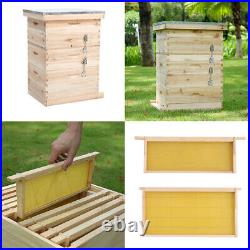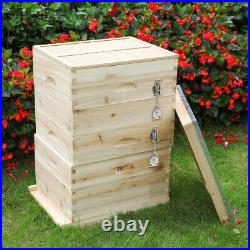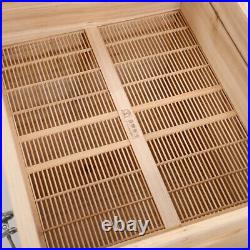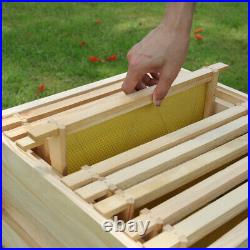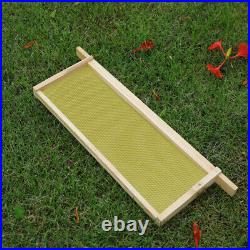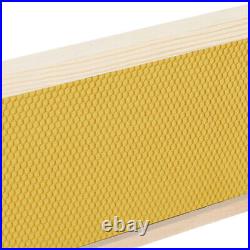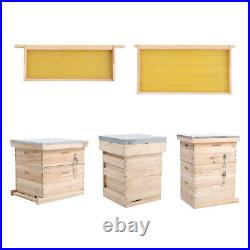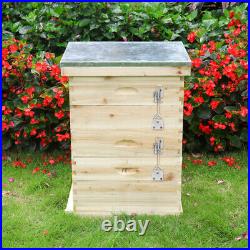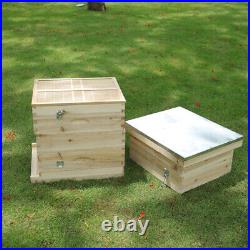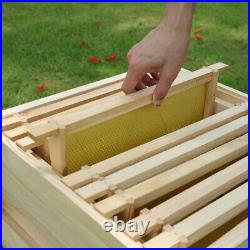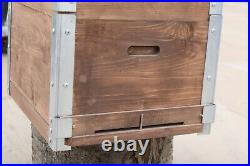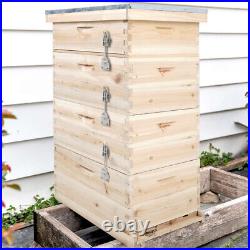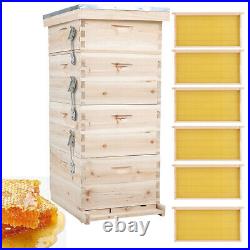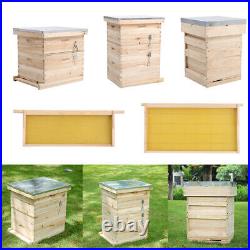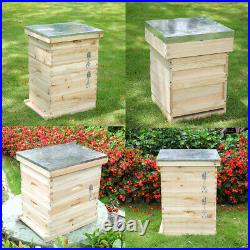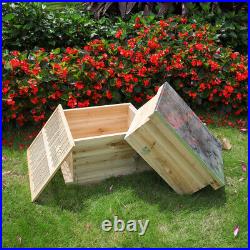





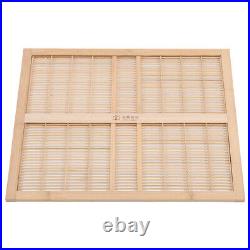
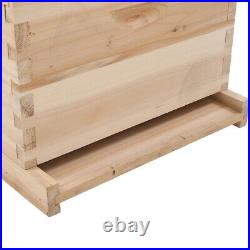

Feature: 100% Brand new and high quality. The Langstroth beehive design philosophy is according to the egg laying power, colony potential, living habits and management requirements of western bees. 4 tier high brood box, waterproof, moisture-proof and insect proof, durable, not easy to deform. Made of tough and sturdy wood material, any piece of board is processed strictly, and the quality is guaranteed. The natural wood will keep the honey from pollution, and can make the honey produced safer, more natural and fresh. With a galvanized metal cap roof, rain-proof, wind-proof and sunproof, so it can provide a more secure house for your bees. Langstroth beehive adopts a low and wide frame with a low spleen surface, so it is not easy to squeeze dead bees when extracting and inserting the spleen, and it is also very convenient to turn the spleen over. Specification: Main Colour: Wood Color Material: Natural Wood Overall Size: 55.7(L)x46.8(W)x 95(H)cm Package Included: 1x 4 Tiers Langstroth Beehive Box. There will be additional charges to Northern Ireland, Southern Ireland, Scottish Highlands, includes below post code: PH/BT/IV/TR/IM/PA/KW/PO/AB/FK/HS/KA/ZE/GY/JE/BF, thanks.



